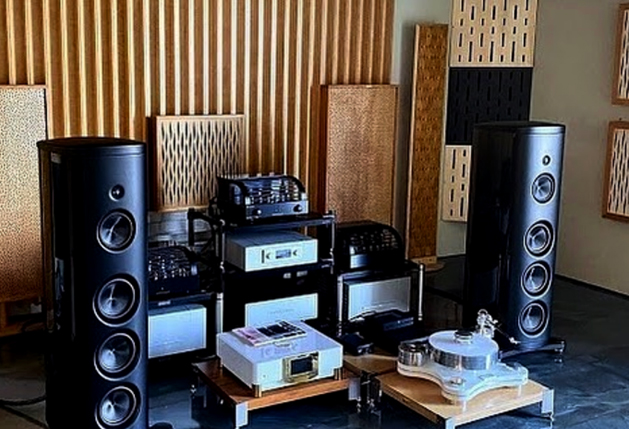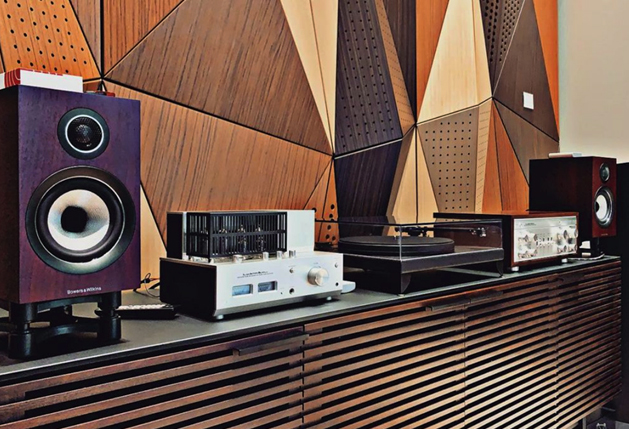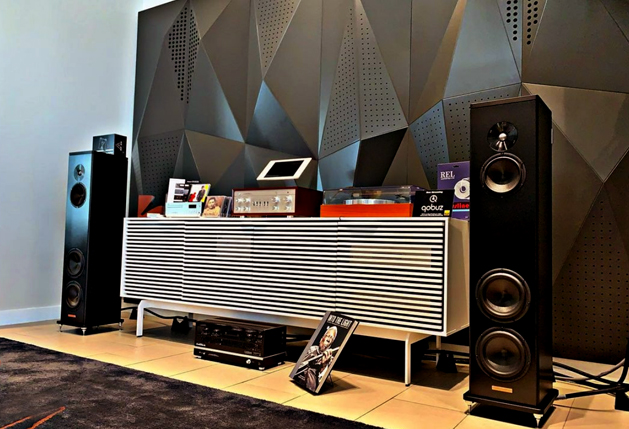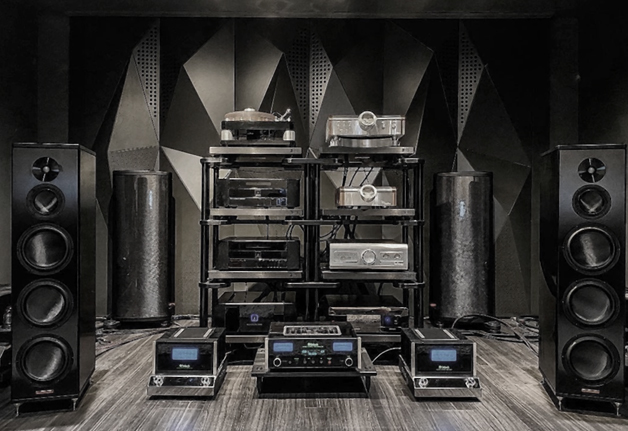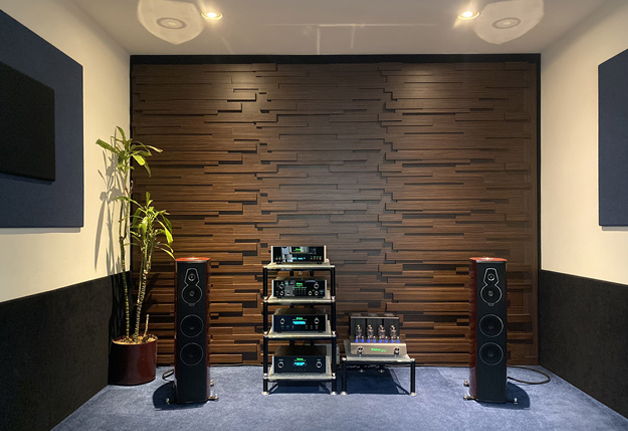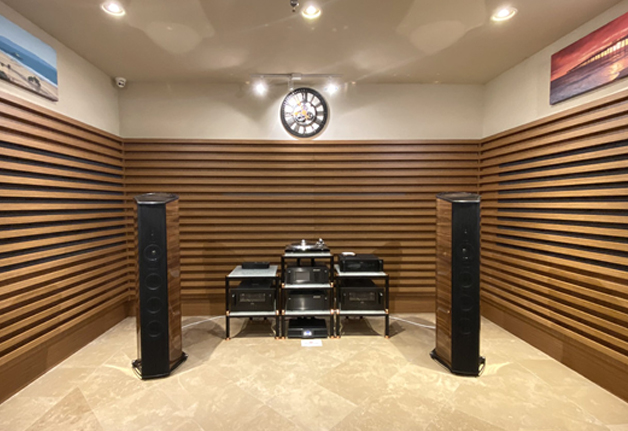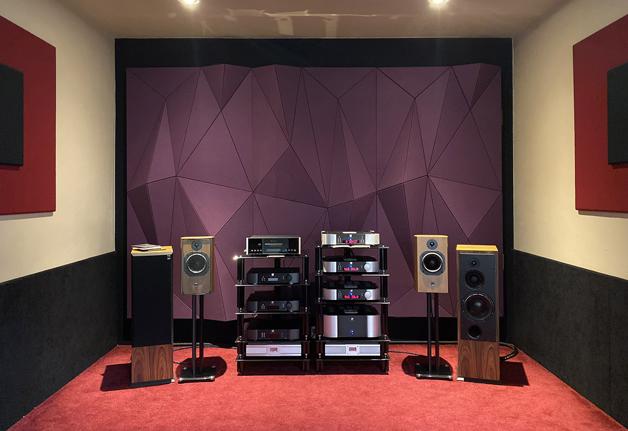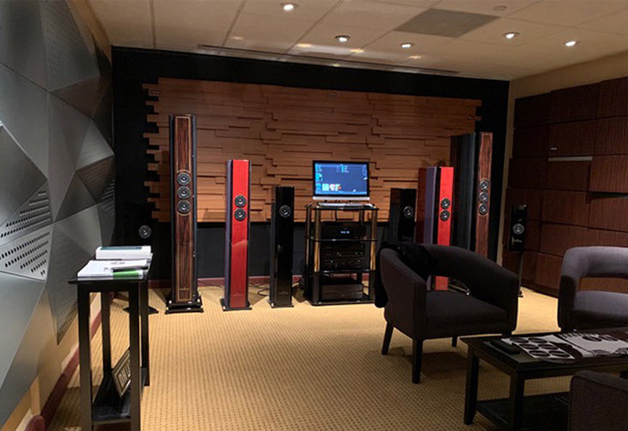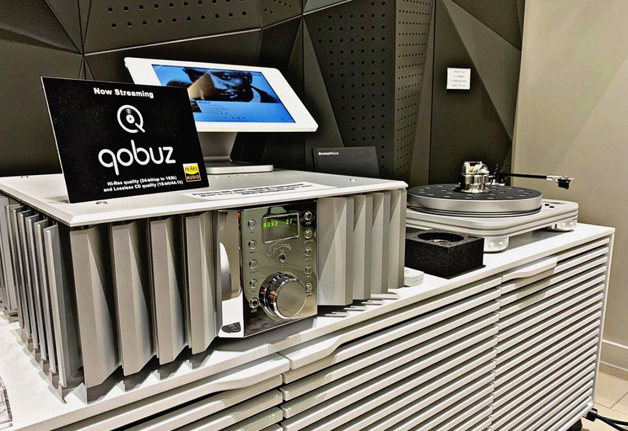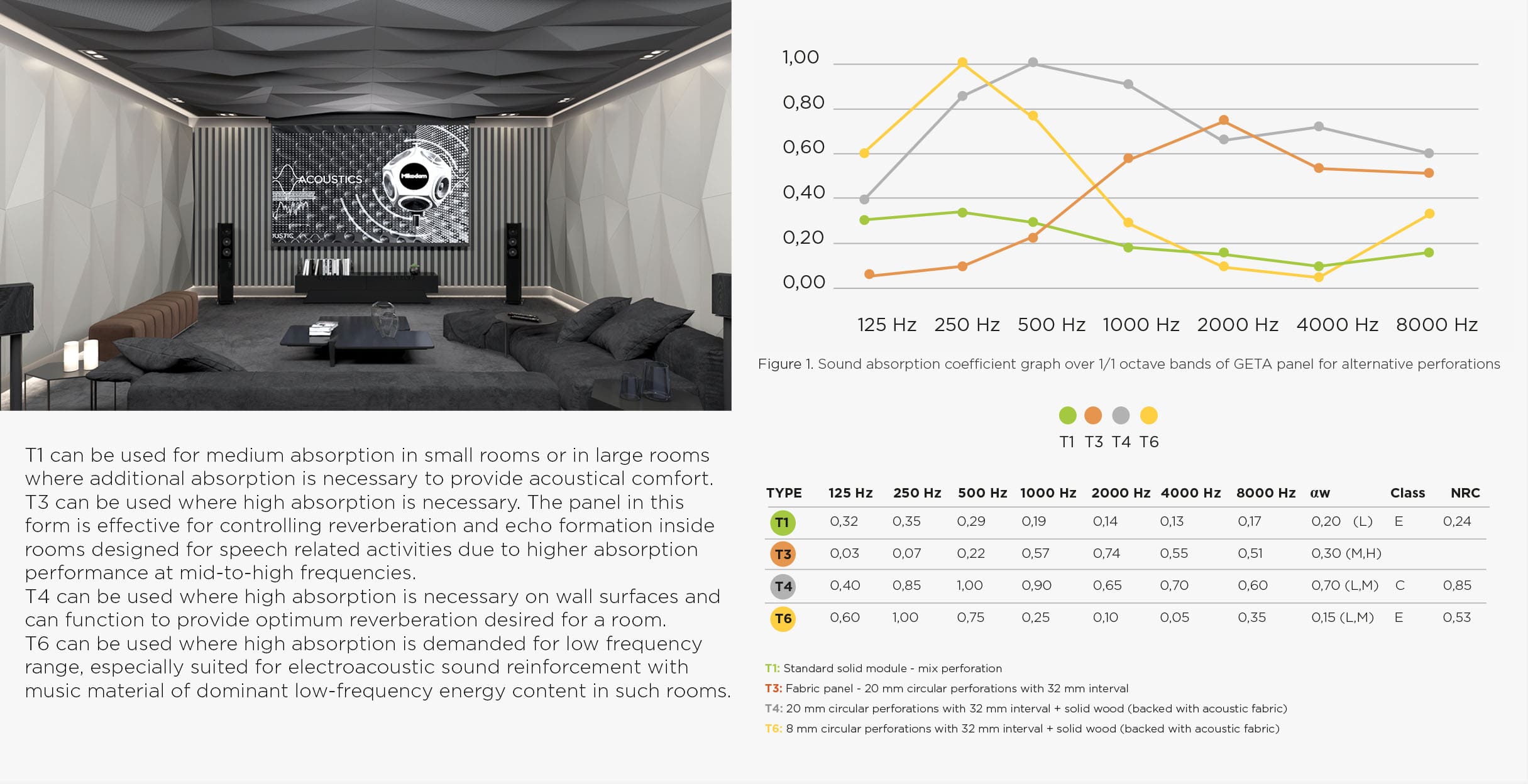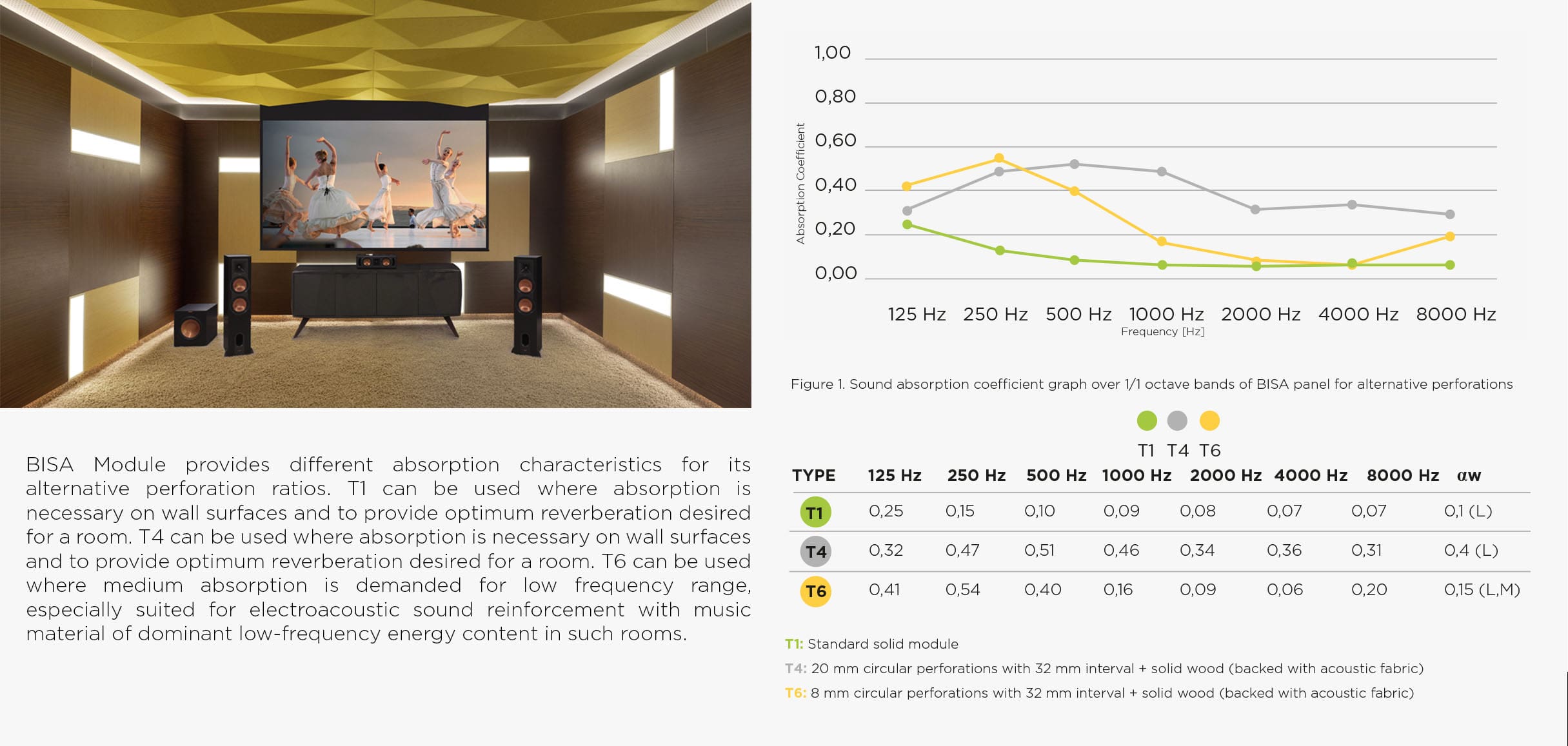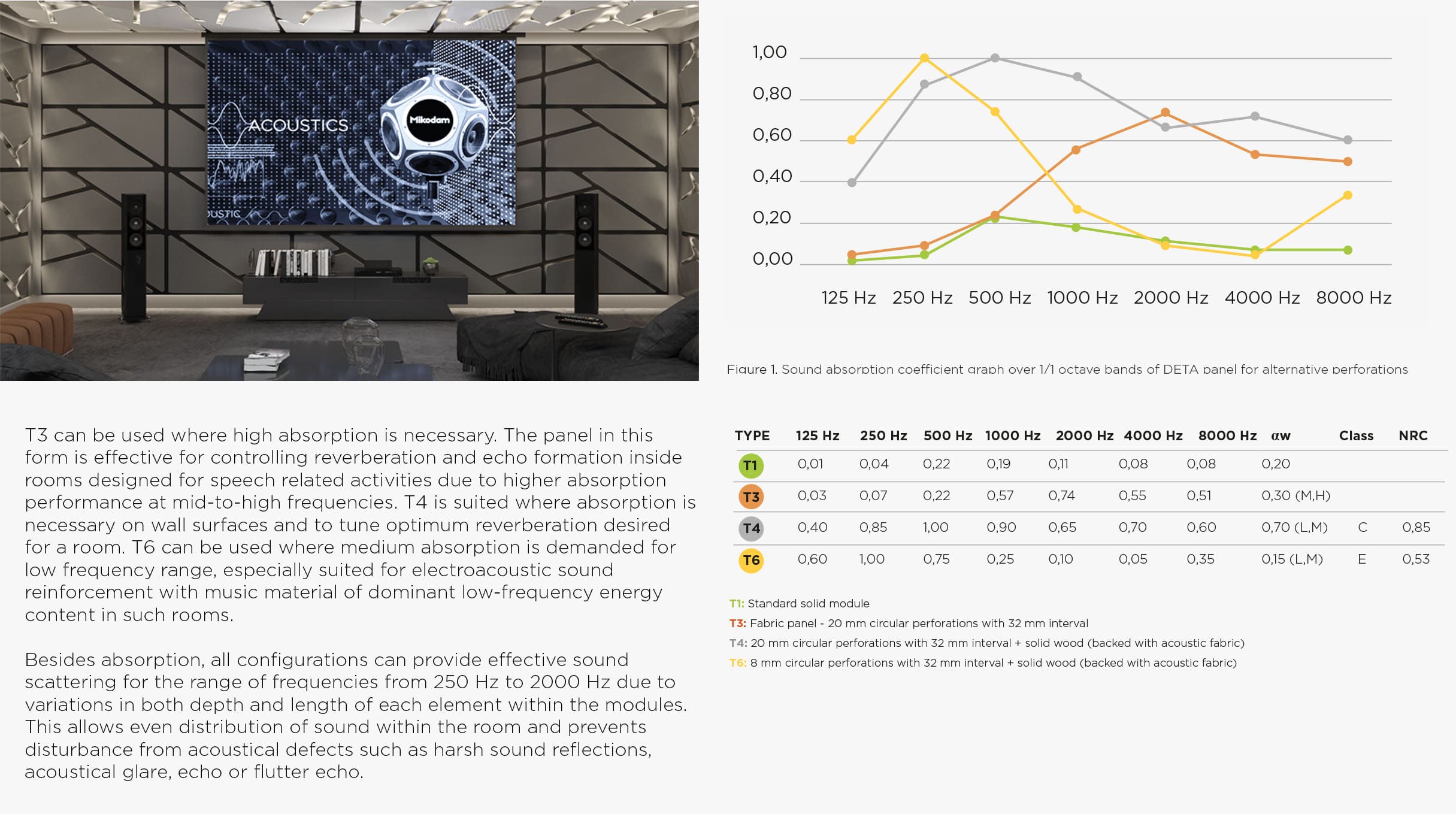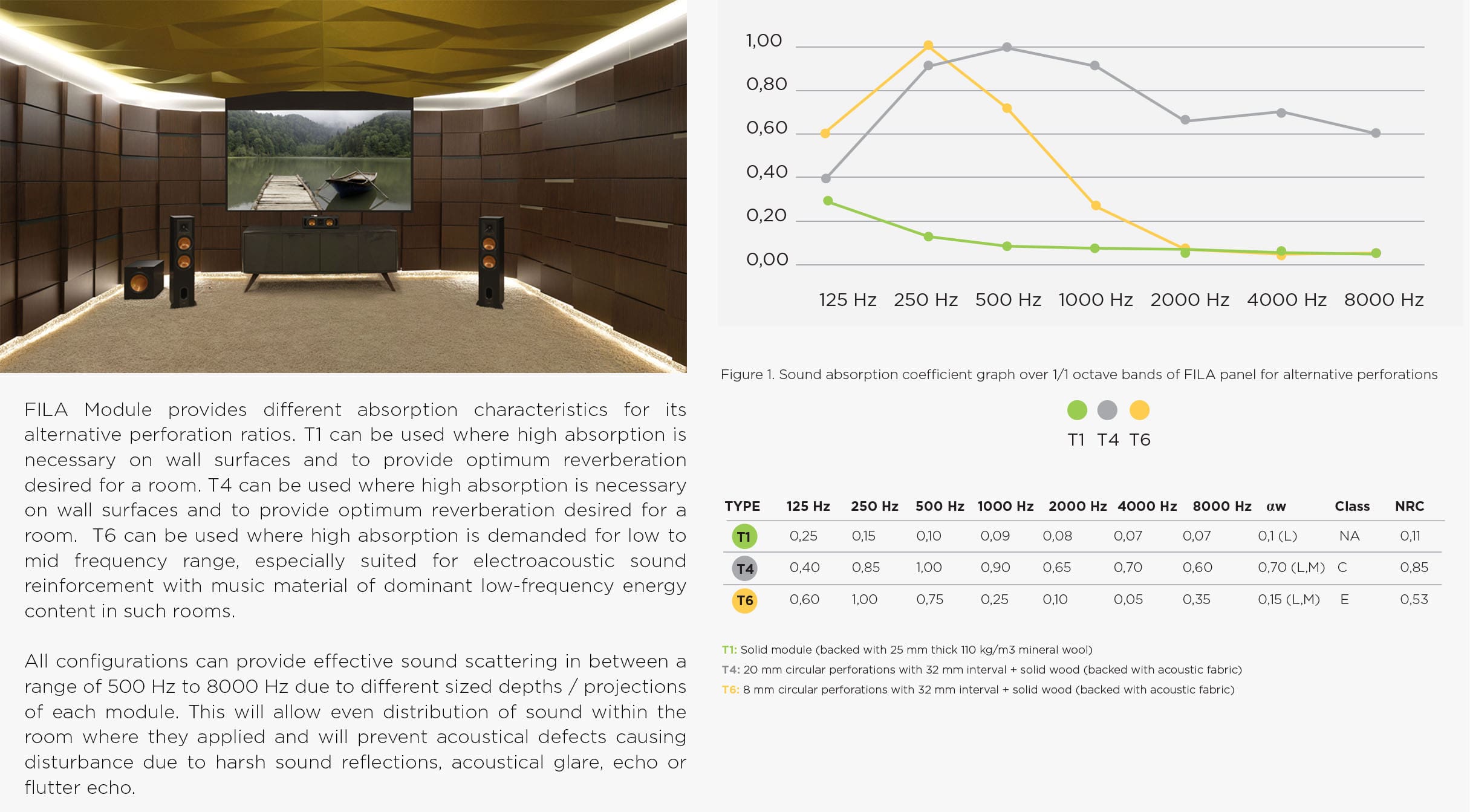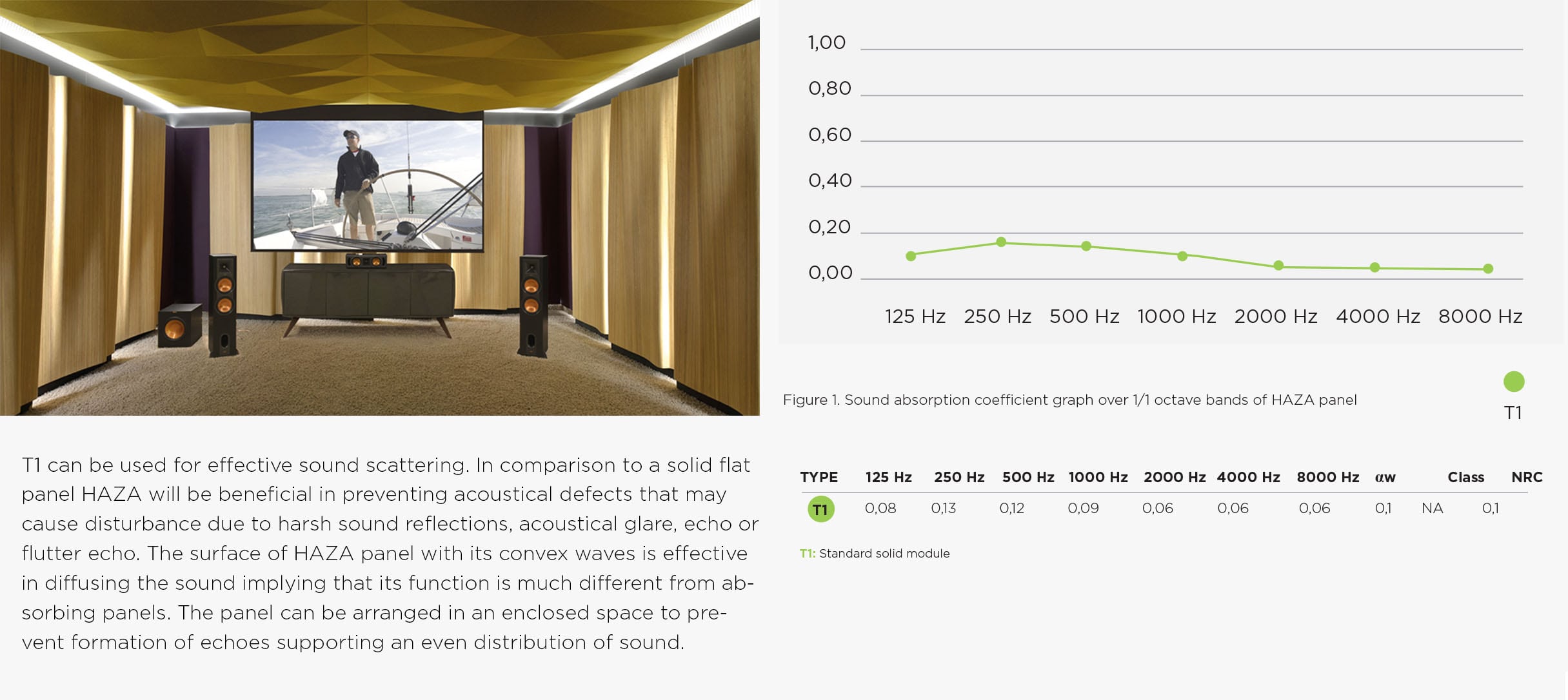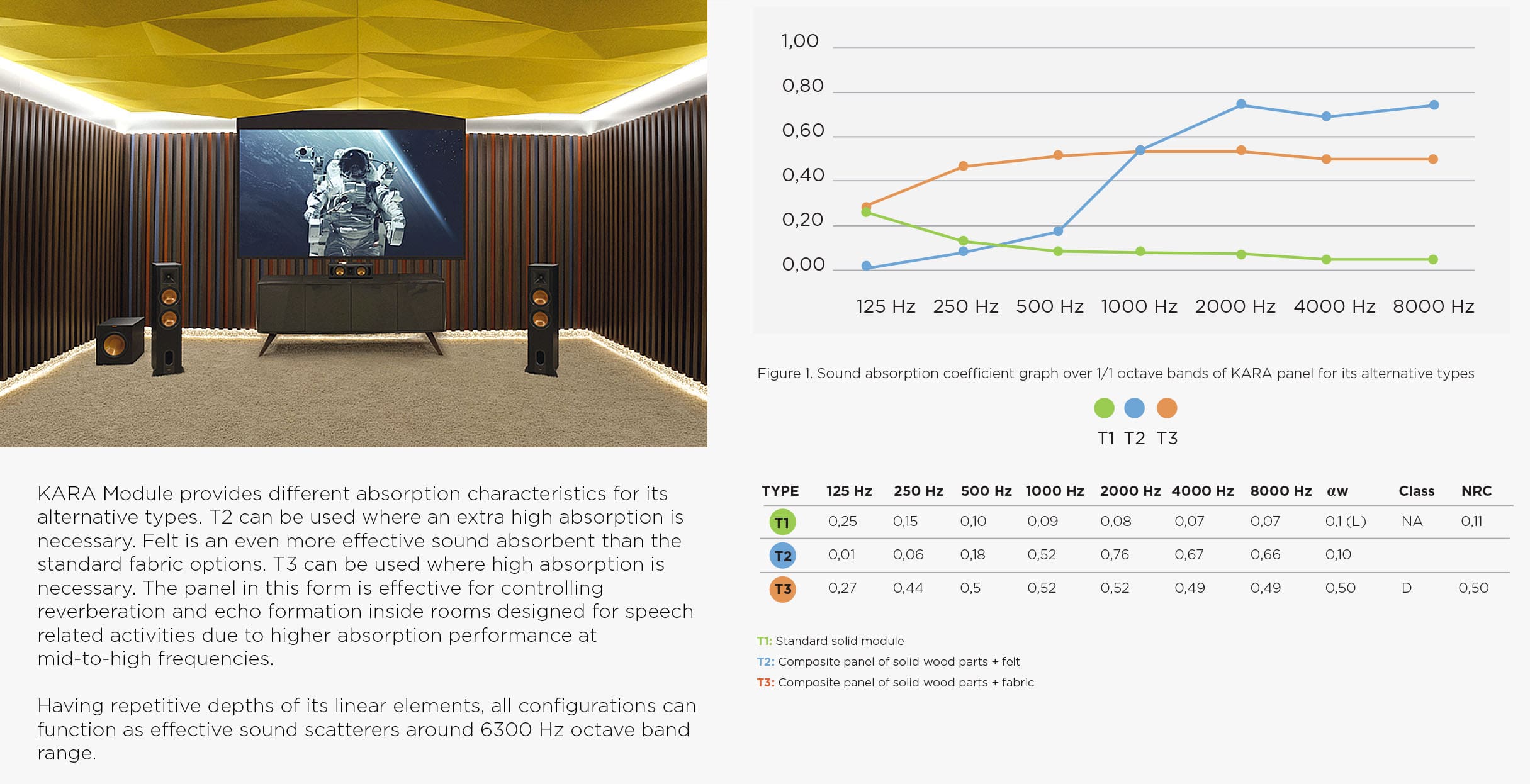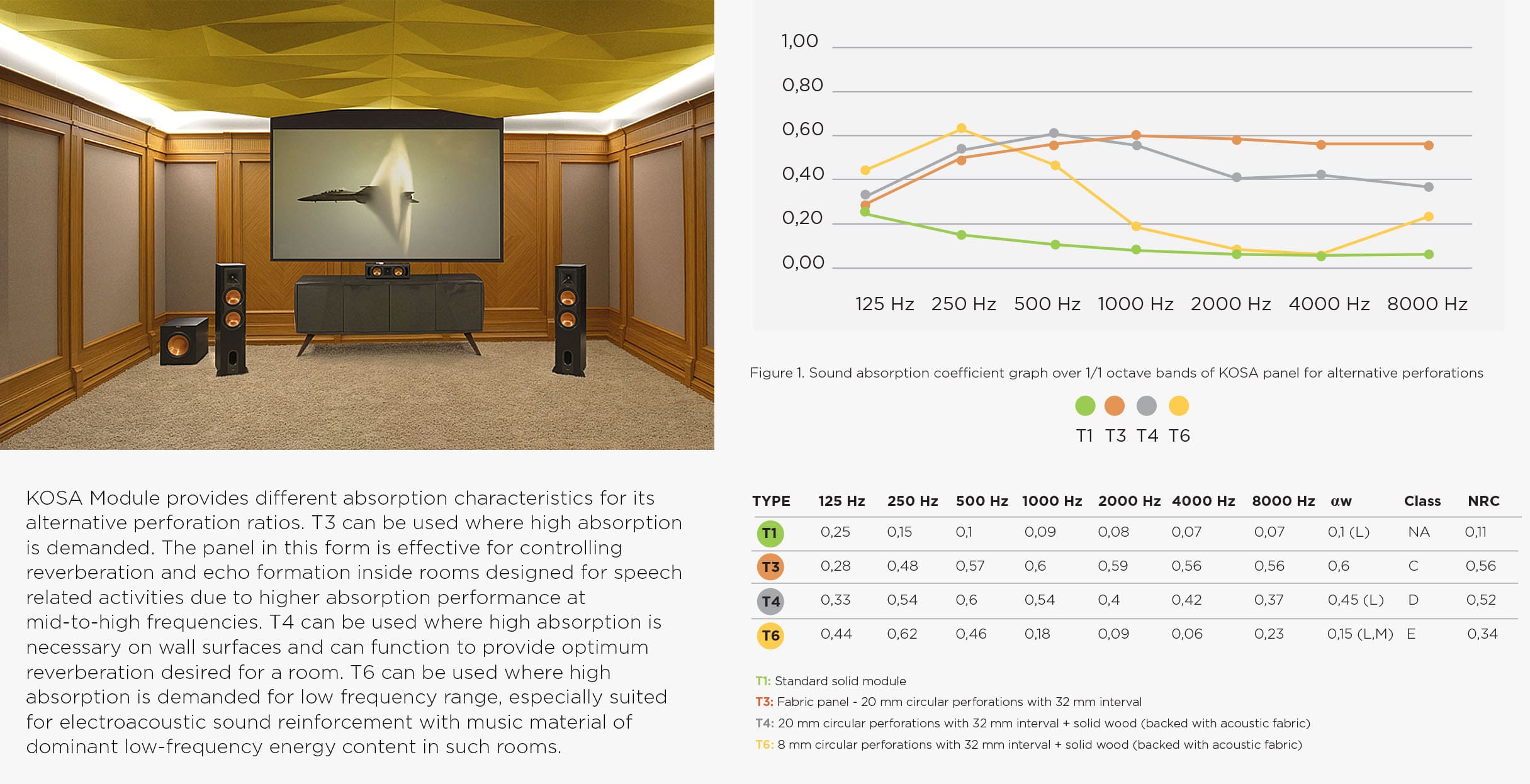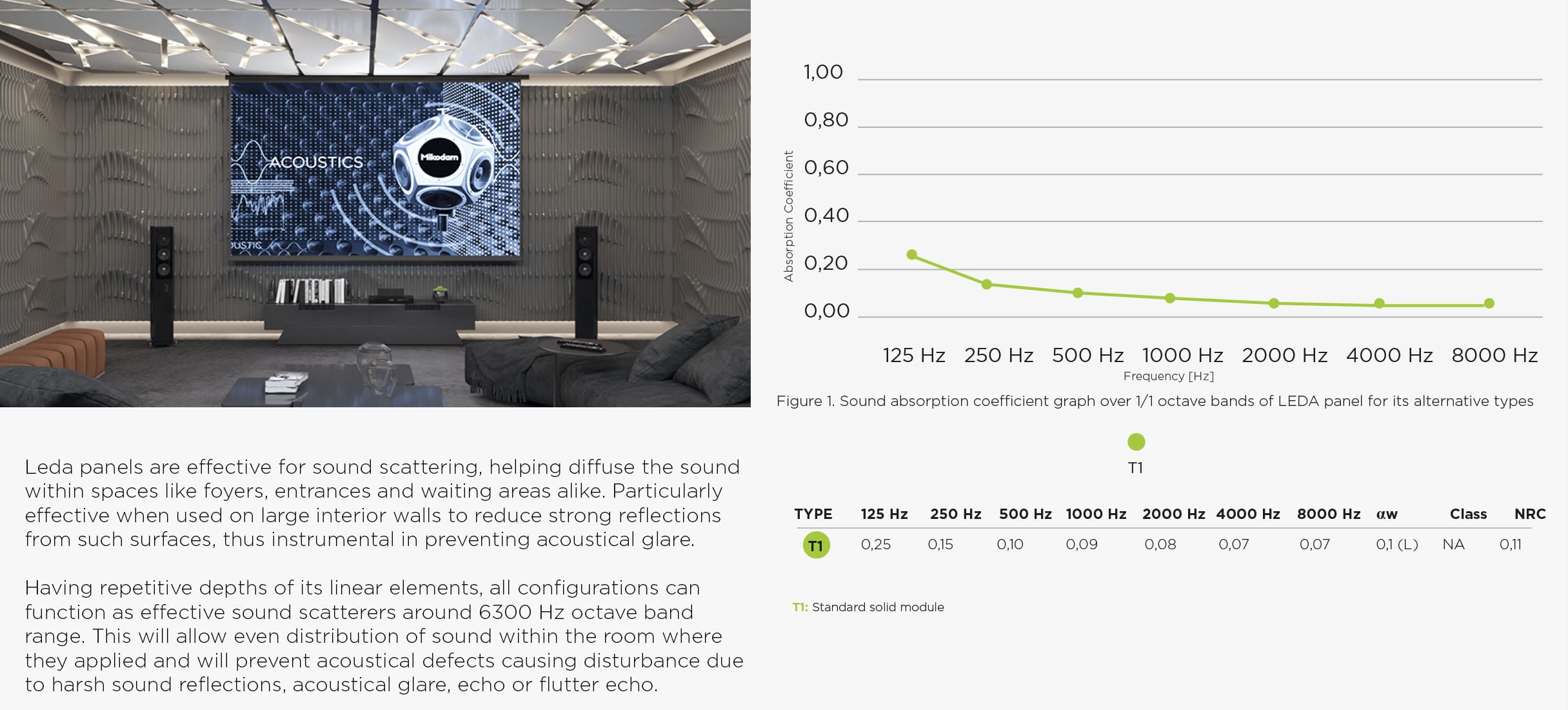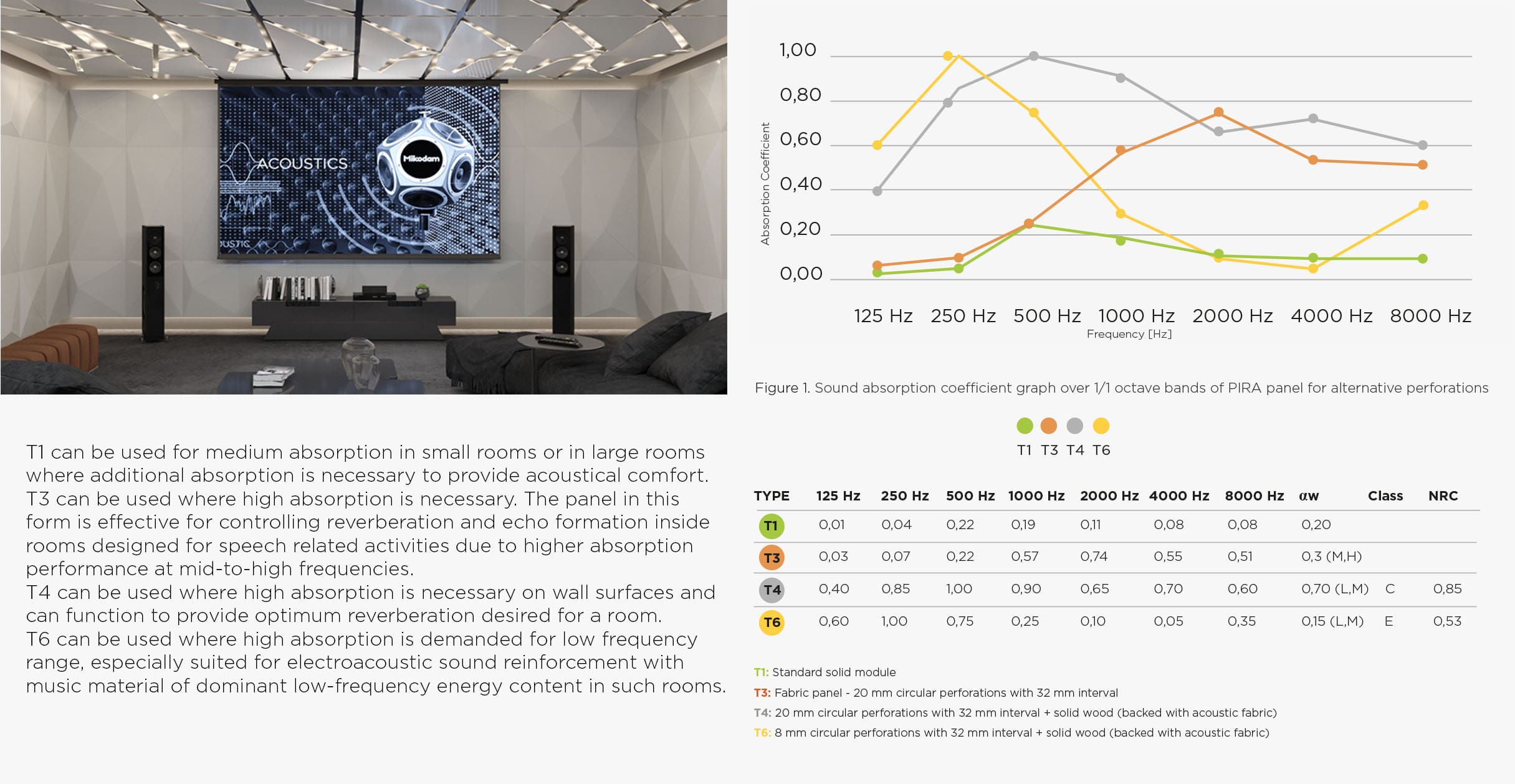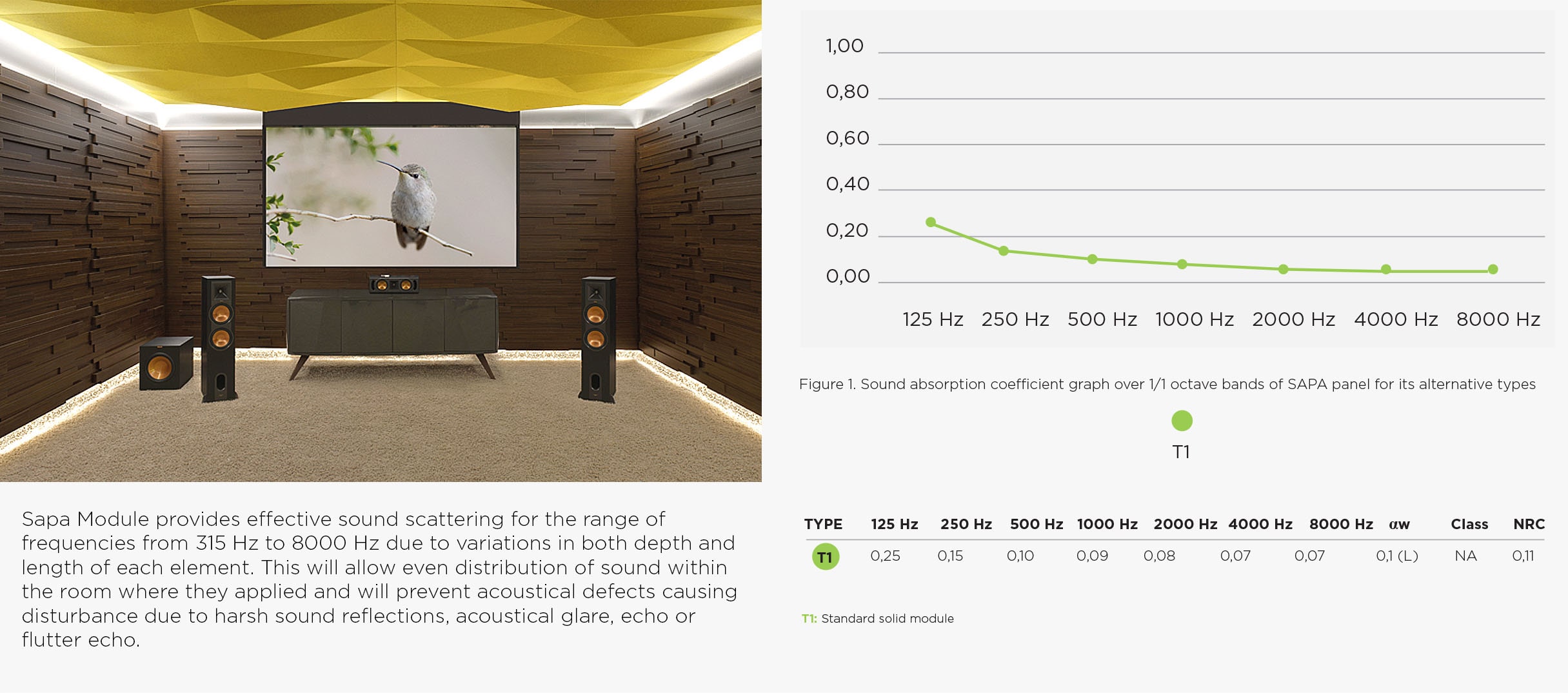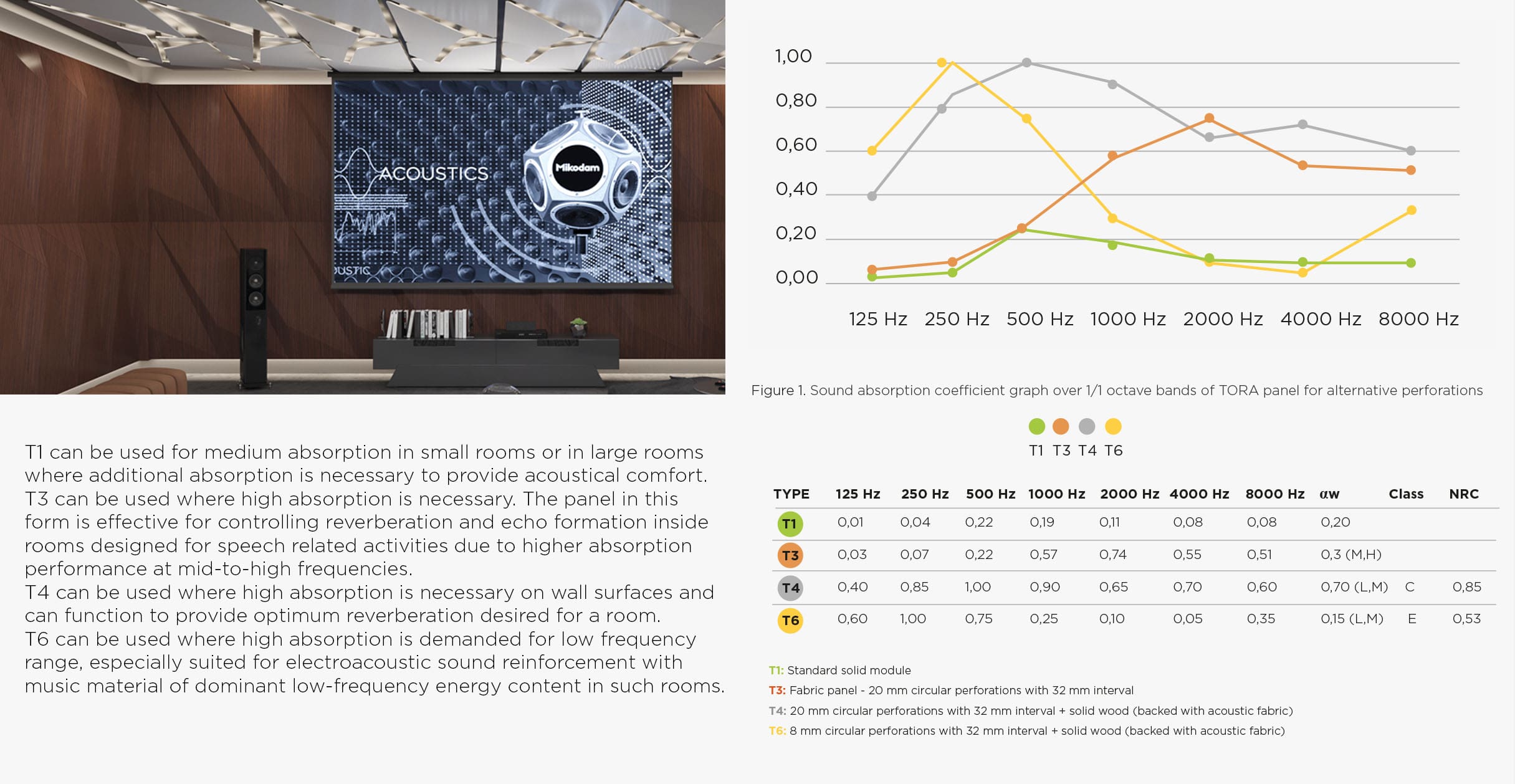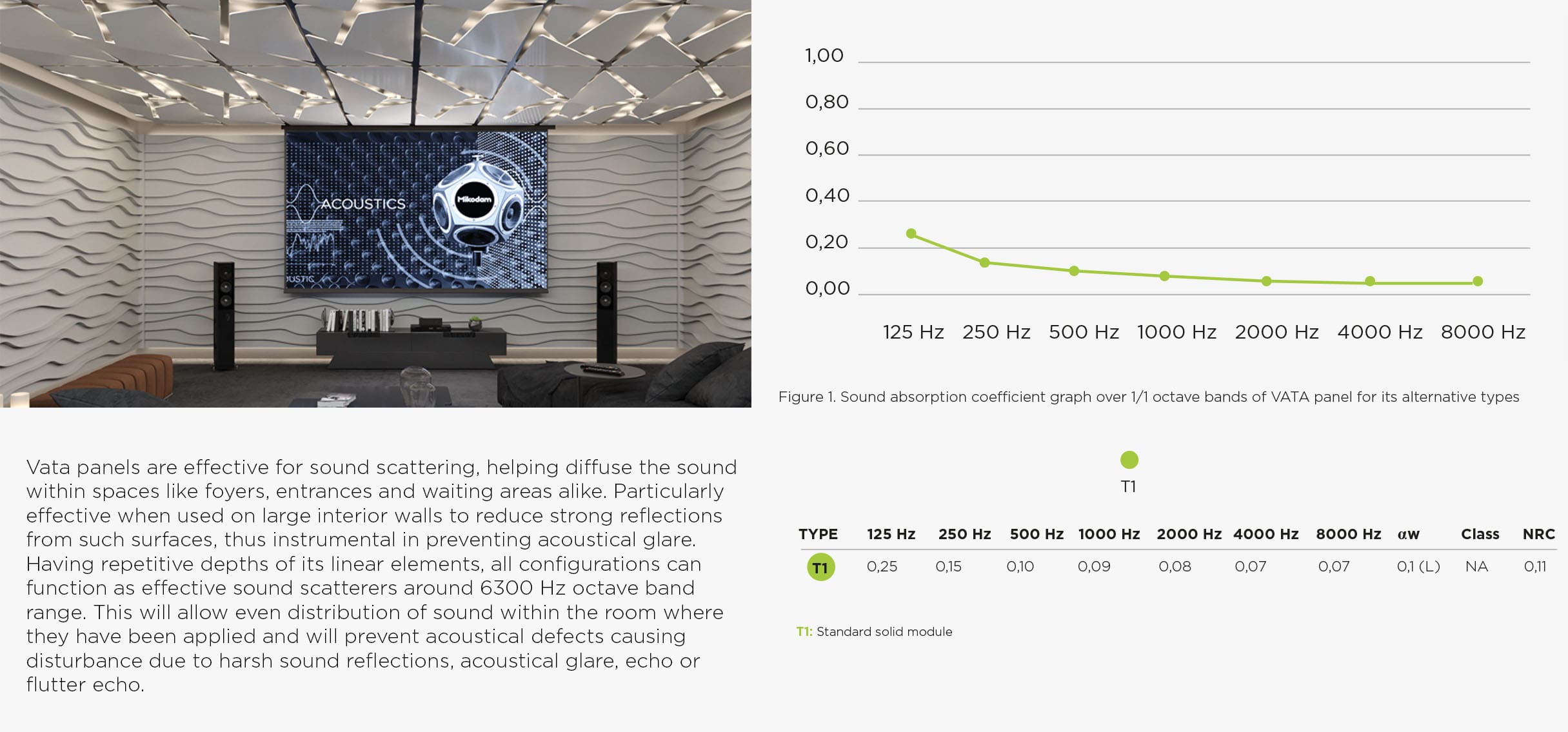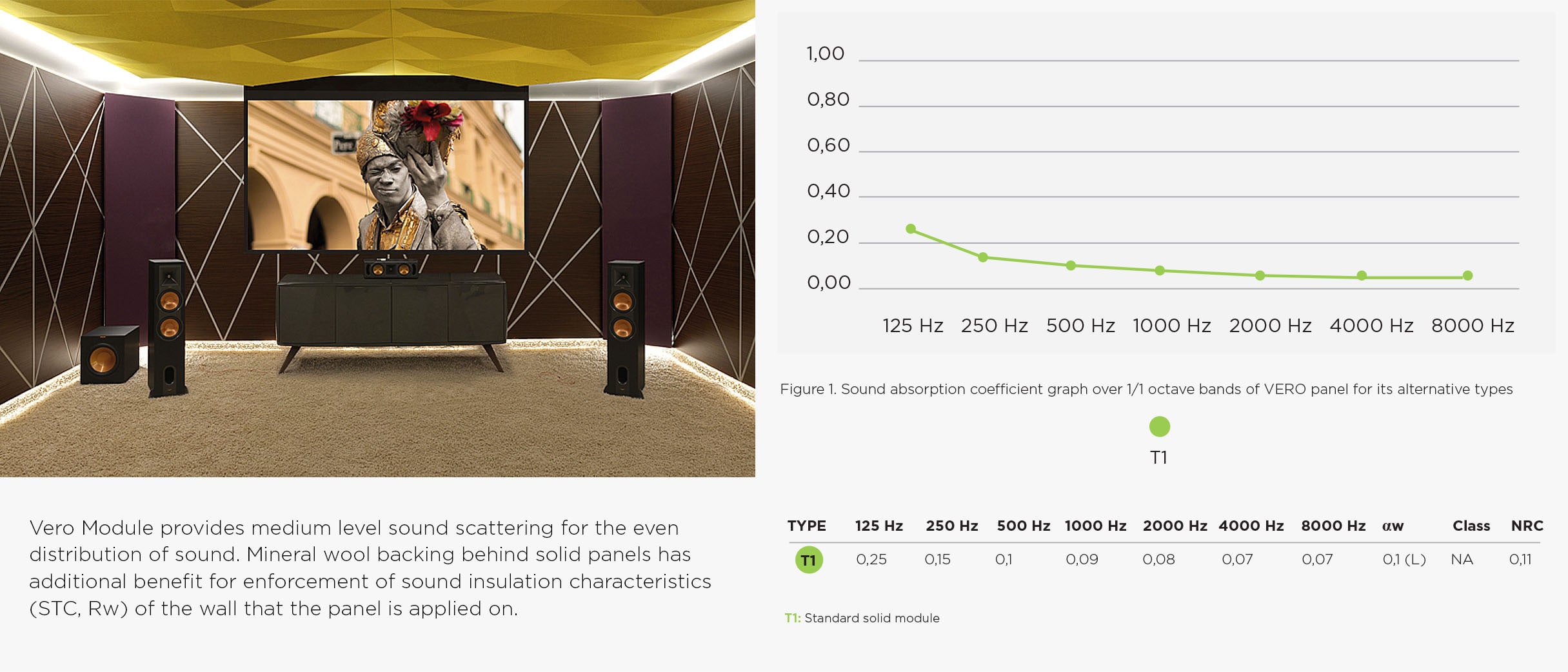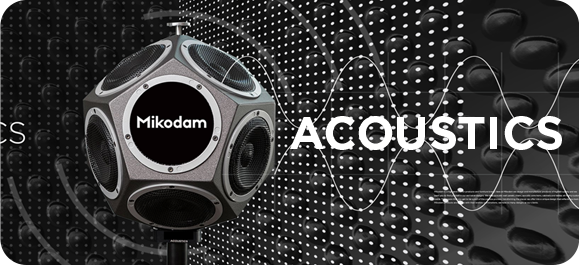

ACOUSTICS
Every second, you hear sounds, embedding them into your mind. Yet when these sounds are uncontrolled, they can turn into a polluted environment full of reverberation and acoustical glare. Acoustics is an important issue that determines the quality of the sounds we take in. It is usually not addressed properly from the outset, and the resulting problems can be solved by custom designs that are time and resource consuming; however, it is usually left unresolved.
In our search for quality, we bring a solution to the issue of acoustic clarity with our panels: choosing from perforation configurations, materials and surface textures as well as three dimensional options, you can build acoustically and aesthetically pleasing environments. Perforated surface options with 2 different diameters along with the material and the mass of the panels provide sound absorption. The geometry and the 3D design of the surfaces provide sound scattering. The forms Mikodam offers are shaped with acoustic calculations and aesthetic requirements in mind. The use of Mikodam panels on walls and ceilings will allow even distribution of sound, preventing acoustical defects such as acoustical glare, echo or flutter echo. The isolators located between the supporting rails and the walls stop vibrations from spreading and prevent undesired resonances from coloring the original true sound.
_3.jpg)
The use of Mikodam panels on walls and ceilings will allow even
distribution of sound, preventing acoustical defects such as
acoustical glare, echo or flutter echo.
THE IMPORTANCE OF ACOUSTICS
We believe that acquiring true interior quality (or quality in any subject) requires multiple elements that are of high quality. Acoustics, being one of these aspects, can affect the entire experience of a person in a particular space, public or private.
How a particular space should be treated to reach the desired acoustic quality varies according to elements such as the size of the space, the number and intensity of sound sources, the number and angles of surfaces forming the space, the materials used on each surface, and how sound travels within the space. The calibrations made taking all these factors into consideration in order to reach the desired quality of sound are called acoustic alterations. Concert halls, conference halls, meeting rooms, home theaters, spaces for listening to music, restaurants and bars, gaming spaces, spaces designed for virtual reality experiences, and entertainment spaces: each has different acoustic scenarios and different acoustic needs that should be addressed meticulously.
The size of a space plays a role in acoustics, determining how far the sounds can reach. Possible acoustic defects are that the sound does not reach all parts of the space equally, the sound does not reach the furthest sections of the space, the sound reaches all borders at a high intensity level, causing acoustical glare, or the sound collects, resulting in an echo.
Sound sources – instruments, humans, the environment, speakers – release sounds at different frequencies, angles, intensities and propagation speeds. The number and location of sound sources differ in different scenarios. For instance, while stereo systems are preferred for listening to music, surround sound systems are chosen for home theatres. Surround sound systems deliver the sound to their audience from sources with different positions and angles, creating an acoustic experience that is closer to reality, increasing the effect that the sound has on the audience.
Depending on the variables, sound within enclosed spaces experiences phenomena such as reflection, scattering, diffraction and/or absorption upon interaction with solid surfaces, not to mention transmission through physical boundaries of the space. In cases where the space is large, but the source is natural or limited, the sound needs to be reflected to reach all spots in the space. The sounds that reflect from different surfaces might reach the listener at different time delays. In order to eliminate undesired effects, the sound waves need to be treated with both absorption and scattering. It is mandatory to eliminate the pollution caused by uncontrolled reflections for sound with improved clarity. Undesired pollution called echo is caused when a sound coming from a certain direction arrives at a receiver position with a time delay of 50 ms or more from the next arriving sound. If any of these sounds are associated with reflection from surfaces, the echo-producing-surface needs to be treated with absorptive and/or scattering materials depending on the acoustical program of the space.
Sound waves reflect more on corners with right angles; using sound absorbing panels on the corners of a space will increase its acoustic quality. However, when sound absorption is excessive, the sound in the space becomes dull and unnatural. Especially in spaces such as movie theaters, where one wants to feel as if they are in a different world, or in public spaces such as restaurants and bars where it shouldn’t be too silent, remaining lively while avoiding sound explosions, it is recommended to scatter the sound. Therefore, the soundscape needs to be designed to reflect the characteristics and functions/program of the space.

Reverberation time is the time taken by the sound to drop by 60 dB after the source is shut off. This amounts to a drop to one millionth of its original intensity. It is directly proportional to the volume of the space, while it is inversely proportional to the absorbing characteristics and areas of the materials within the space.
Lastly, attaining acoustic quality also means preventing sounds outside from penetrating into the space and vice versa. It is important to exploit vibration isolation techniques for this purpose.
The number of variables involved in acoustic quality is the reason that professionals at Mikodam test our panels and report the results of their acoustic reactions. This way, Mikodam can best serve your acoustic needs. Mikodam panels help create acoustically improved environments without compromising on aesthetics.
Common spaces benefit from Mikodam panels as much as spaces that are designed for acoustic activities. You will feel the difference Mikodam panels bring to any experience, even a simple conversation. Our sub-conscience plays a vital role in determining how we feel; a solution that is both visually and aurally fulfilling will enhance the delight in all your experiences.
Each configuration has a different acoustic ratio depending on the number of panels, the materials and textures, and the size and ratio of perforations (if used). Each interior has its own acoustic requirements and at least one of the Mikodam panel lines will suit your needs.
©2026 Mikodam.com - All Rights Reserved - Privacy & Policy - Terms of Use

